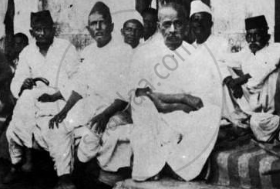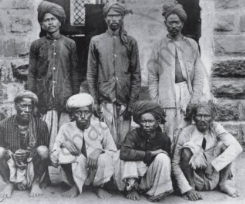Topics
Historiography : Development in the West
History : Applied History
Working of the Constitution
Historiography : Indian Tradition
The Electoral Process
Political Science : Working of the Indian Constitution
Applied History
Political Parties
History of Indian Arts
- What is ‘Art’?
- Indian Traditions of Visual Arts (Drik Kala): Painting
- Prehistoric Paintings
- Mural Paintings and Cave Painting
- Folk Styles of Paintings
- Classical Styles of Painting
- Miniature Paintings in Manuscripts
- Modern Indian Paintings
- Indian Traditions of Visual Arts (Drik Kala): Sculpture Art
- Indus Civilization Sculpture
- Folk Styles of Sculptural Art
- Classical Styles of Sculptural Art
- Indian Iconography
- Indian Traditions of Visual Arts (Drik Kala): Architecture and Sculpture
- Rock-cut Architecture
- Temple Architecture
- Indo-Islamic Architecture
- Indo-Gothic architecture
- Indian Traditions of Performing Arts
- Indian Theatre
- Indian Music
- Indian Dance
- Present Scenario of the Performing Arts
- Art, Applied Art, and Professional Opportunities
Social and Political Movements
- Movement
- Important Movements in India
- Tribal Movement
- Farmers Movement
- Worker's Movements
- Women’s Movement
- Environment Movements
- Consumer Movement
Mass Media and History
Challenges Faced by Indian Democracy
Entertainment and History
Sports and History
Tourism and History
Heritage Management
History - Imperialism
History - 20th Century Age of conflict
History - Emancipation of Asia and Africa
History - World after World War 2
Political Science
Geographical discoveries and colonization
- Concept for Geographical Discoveries and Colonization
Africa
- Imperialism - Africa
Asia: India, China, Japan
- Concept for Asia: India, China, Japan
Dictatorships in Europe, Second World War and world
- Concept on Dictatorships in Europe
- Concept for Second World War and World
First world war
- Concept on First World War
The League of Nations
- Concept for the League of Nations
Russian Revolution
- Concept for Russian Revolution
United Nations Organization
- Concept for United Nations Organization
Africa
- Emancipation of Africa
Asia
- Emancipation of Asia
Globalization
- Globalization After World War II
Scientific and Technological Progress
- Scientific and Technological Progress After World War II
Cold war
- Formation of the Cold War
Social Diversity and Democracy
- Social Diversity
- Coccept for Caste/Race and Democracy
- Concept for Language and Democracy
- Cocnept for Religion and Democracy
- Concept for Gender and Democracy
- Concept for Democracy and Diversity
Challenges to Democracy Remedial Measures to the Challenges
- Concept for Challenges to Democracy Remedial Measures to the Challenges
Internal work
Democracy
- Democracy - Meaning, Types and Characteristics
Political Parties and Types
- Political Parties
- Importance of Political Parties
- Major National and Regional Parties in India/ Types of Political Parties
Notes
Farmers movement:
- Most people in India reside in rural areas (69 percent, according to the 2011 Census). They are employed in agriculture or occupations that are mainly associated with it. Thus, Agriculture is more than just a source of livelihood in rural India. It is a way of life as well. Our agrarian roots can be seen in many of our cultural customs and patterns.
- Cultivating castes were not the actual landowners throughout the Precolonial Period. Instead, the land was ruled by groups that were typically Kshatriya or members of other upper castes, such as the local kings or other politically influential figures in their regions. They had to get a sizable percentage of the harvest from the peasants or cultivators who worked the land. Most taxes were paid in crops and based on the production of the land. Taxes were either eliminated or reduced during drought.
- During the British Colonial Period in the 18th and 19th centuries, social struggles against British brutality included peasant movements.
- These movements only existed to bring back previous systems of societal order and governance.
- The farmer's movements were inspired by the thoughts of Mahatma Phule, Justice Ranade, and Mahatma Gandhi.
Causes of Peasant movements:
- During the British colonization of India, the introduction of the new land revenue system and the alteration of the agricultural structure as a result of colonial economic policies were all significant factors in the impoverishment of the Indian peasantry.
- The overcrowding of the land due to the destruction of the handicraft industry.
- In the Zamindari system, the zamindars took as much output or money as they could from the cultivators while the colonists imposed strict land revenue on agriculture. During a large portion of the British era, agricultural production stagnated or even decreased as a result of the zamindari system. For the population was destroyed by frequent famines and wars, and tyrannical landlords and peasants fled.
- The colonial administration worked directly with the farmers or landowners under the Ryotwari system. For the purpose of paying high land taxes levied by the colonial government, the "actual cultivators" were exploited. Fearing he would lose his only source of income, the overburdened farmer frequently went to the local moneylender. afterward demanded extortionate interest rates on the money lent, taking full advantage of the former situation.
- In some situations, desperate peasants turned to crime to get away from unpleasant circumstances. Dacoity, social banditry, and robbery were among these offenses.
Important Peasant movements:
|
Vallabhbhai with Bardoli Satyagrahis |
1. Bardoli Satyagraha:
|
 |
2. Champaran Satyagrah:
|
|
Deccan Riots |
3. Deccan Riots, 1857:
|
Green revolution and its Social Consequences:
- As you are aware, the government implemented a programme to modernize agriculture called the Green Revolution in the 1960s and 1970s.
- The use of new technologies seemed to be causing inequities in rural society. Because the crops of the Green Revolution were so profitable, farmers who had access to land, money, technology, and expertise, as well as those who could invest in new seeds and fertilizers, could improve their output and raise their income. However, it frequently resulted in the eviction of tenant farmers.
- The ultimate outcome of the Green Revolution was a process of ‘differentiation’, in which the rich grew richer and many of the poor stagnated or grew poorer.
Demands of the farmer's movement: The appropriate price for agricultural products, agriculture to be treated as an industry, implementation of the recommendations of the Swaminathan Commission, debt relief, debt cancellation, and national policy for agriculture are some of the demands of the farmer's movement.
Famous farmer's organizations in India: Shetkari Sanghatana, Bharatiya Kisan Union, All India Kisan Sabha.
If you would like to contribute notes or other learning material, please submit them using the button below.



